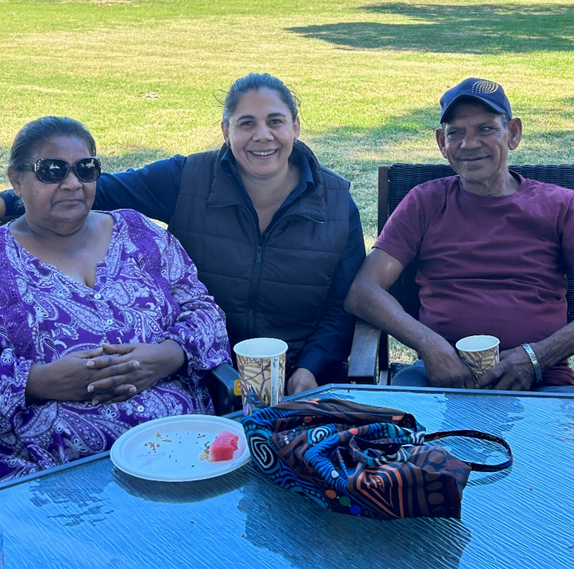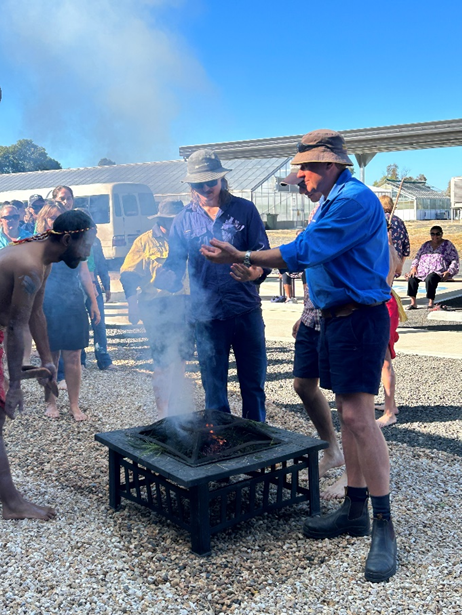Key points
- We're putting reconciliation into action with the naming of new buildings at our Myall Vale site.
- This is a recognition of the Traditional Owners of the site at Myall Vale, the local Gamilaroi People.
- The naming also recognises the contributions Indigenous Australians have made to the local cotton industry.
Indigenous Australians are the holders of the first science knowledge of Australia.
A proud Gamilaroi woman, Bernadette Melton was born and raised in the small rural town of Wee Waa in north-west New South Wales. She has worked with our team at the Cotton Research Facility in Myall Vale since 2018.
The site recently underwent a major $25 million upgrade with new purpose-built facilities to support cutting-edge cotton research.
As part of the upgrade, we want to recognise the site as being on the Traditional Lands of the Gamilaroi People. We want to recognise their contributions, and those of other Aboriginal communities, to the local cotton industry. We're proud to rename the new buildings in Gamilaroi language.

Cotton’s early days in NSW
Helen Murray is a respected Elder in the local community of Wee Waa.
She joined the celebration on site to unveil the Gamilaroi names for the new buildings. Helen says she has vivid memories of Aboriginal people from far and wide travelling to the area in the 1960s to work in the newly established cotton industry.
"They camped at a place called Tulladunna Reserve. The work was seasonal and at different times of the year Tulladunna would be full of people living together and heading out to work each day as cotton chippers, including my own family who moved there in 1969," Helen said.
“Some would move on when the season ended, but many stayed and are still living in the area.
"It’s great that the contribution of all those workers to the cotton industry is in some way being recognised with the naming of the buildings in traditional language."
Clifford Toomey is another local Elder who travelled to Myall Vale for the naming celebration. He says it’s a big step forward on what has often been a difficult road.
"We talk about reconciliation, and this naming of the buildings in Gamilaraay language shows that CSIRO is willing to come on board, recognising our language, our land and the contribution of Aboriginal people to the cotton industry," Clifford said.

Living Legacy
Bernadette said bringing the Elders to the site has meant all staff who work at the facility can get a real appreciation of the history of the area and the contribution of Indigenous Australians to the success of the cotton story.
"The resilience of these Elders is inspiring. It was not easy for them during those early years at Tulladunna, and we have a lot to be thankful for in terms of their hard work and their legacy in the lives of the young people who are now in successful jobs in research in the cotton industry," Bernadette said.
"First Nations culture is a living culture and the connection to Country is central to that, so it’s important that is reflected at sites like Myall Vale."
Helen said it’s a proud moment for all Aboriginal people to see someone like Bernadette now working on important science research in the CSIRO cotton lab at Myall Vale.
"We never grew up with these opportunities, so it is a big step forward to see all of these Indigenous staff working here at Myall Vale," Helen said.
Myall Vale currently has six staff who identify as Indigenous working in different roles at the site, some who are undertaking PhD studies in cotton science.
Reconciling the past and looking to the future
Bernadette said the event, bringing together our people and Elders for a smoking ceremony and official unveiling of the new names in Gamilaraay language, has been really special.
"A lot of things have been taken from Indigenous Australians – land, language, lore, customs – and we’re only just starting to find our way back, especially with language,” Bernadette said.
"So, it’s really fitting that we’ve been able to recognise the importance of that with the naming of these new building in language. It’s good for the site and good for the local community."
Bernadette is also working with the local Wee Waa Aboriginal Education Consultative Group to support schools and encourage Indigenous youth to think about considering science as a career to keep building the First Nations voice in STEM areas.
Giving meaning to names and places
Maruma-li - mar-roo-mully (Cotton Processing Facility)
‘To fix, mend or make better’ – signifying that all the research that breeders have contributed has made way for better varieties of cotton and that CSIRO scientists are striving for ‘fixes’ in the way plants respond/adapt without compromising yield.
Mara galgaa – mara gul-gah (Plant and Soils Facility)
‘Many Hands’ – signifying that in the plant and soils facility many hands are required to process the plant material.
Ngurrugu gunthi - noo-ra-goo gun-di (Multi-purpose Laboratory)
‘Tomorrow’s House’ – signifying that the laboratory was built for the science of tomorrow. It was designed with the future capabilities.
